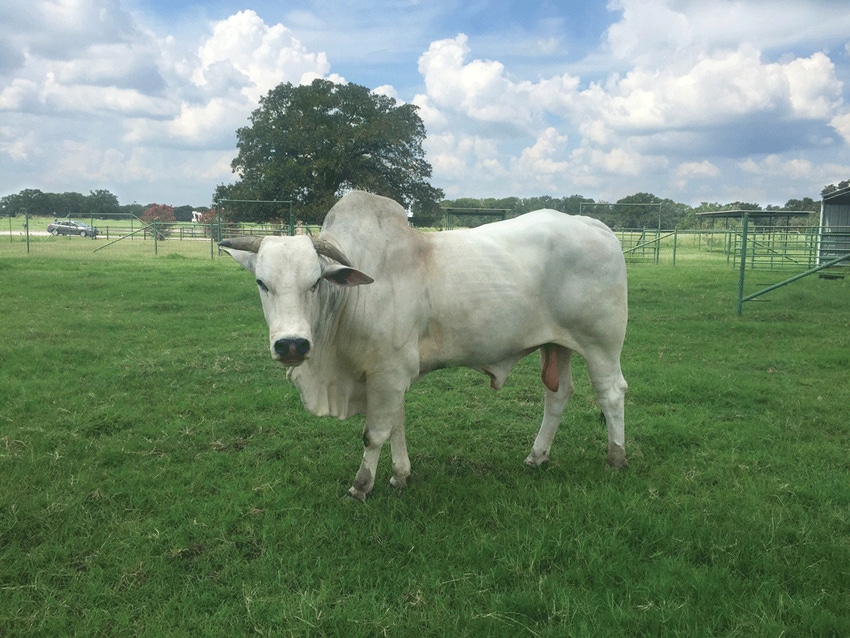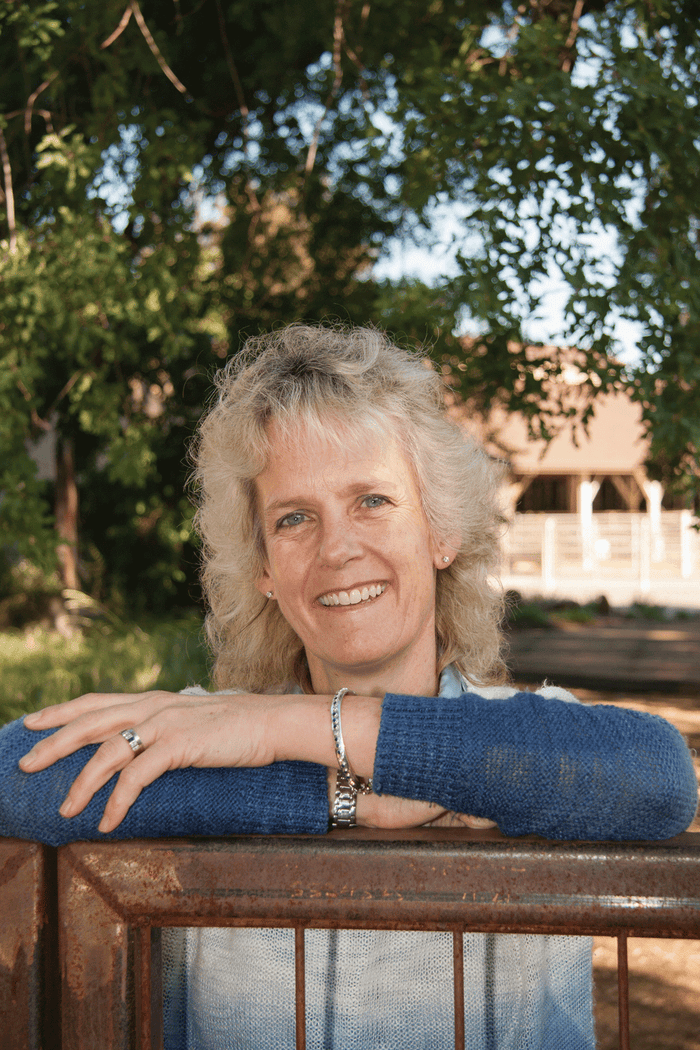Directing nature? Gene editing offers big potential
The promise of genetic editing is that it enables the deletion or insertion of a couple of base pairs in the DNA sequence of a bull or cow already proven for genetic merit in other areas.
February 17, 2017

You can poll naturally horned cattle, beef up light muscling and all the rest. But it takes next to forever when you have to wait for the right genetic mutation to come along, in a genetic package worth propagating.
That’s the promise of genetic editing — enabling the deletion or insertion of a couple of base pairs in the DNA sequence of a bull or cow that’s already been proven for genetic merit in other areas.
One company, Minnesota-based Acceligen, is already doing it. The company has created polled Holstein bulls, shut off the myostatin gene to create double-muscled Nellore, and figured out how to reduce heat stress in otherwise non-tropically adapted cattle.
Understanding how and why they’ve done so bears pondering, as debate over such ability is sure to ratchet up from inside and outside the cattle and beef industries.
DNA basics
“Animal breeders have used selection on naturally occurring genetic variation to achieve the breeding objectives they’re after. The problem with that is that it’s slow, and identifying desirable new genetic variation is really a matter of chance,” says Alison Van Eenennaam, Extension animal genomics and biotechnology specialist at the University of California, Davis. She shared insights during a recent presentation hosted by the National Beef Cattle Evaluation Consortium (NBCEC).
Another problem with selective breeding, says Van Eenennaam, is that favorable alleles from the parent can be left behind inadvertently, or deleterious genes can be carried forward.

She offered a quick DNA refresher, adapted for the following description.
Every cell in an animal contains DNA, which represents the genome — all of the chromosomes that make up an individual’s genome. A DNA molecule consists of two strands of nucleotides wound around each other — the double helix that many are at least casually familiar with.
Each strand is a chain of nucleotides held together by chemical bonds. There are four different nucleotides in DNA, which vary according to the base: adenine (A), cytosine (C), guanine (G) and thymine (T); collectively, ACGT. These nucleotides and the sequence of them provide instructions for assembling the proteins that determine both inheritance and gene expression.
Now, think of these two chains lying side by side before they’re twisted together. The nucleotides — one from one strand and one from the other — can form what are called base pairs. Only certain combinations of nucleotides will bond with one another.
What happens at the base-pair level of DNA, in the natural course of an organism’s life, makes genetic editing possible. Breakages in the DNA double-stranded helixes are common, caused by everything from ionizing and UV radiation (sunlight) to mutagenic chemicals like alcohol.
“The possibility that’s opened up with genome editing is that we can go in and very specifically target double-strand breaks at a particular location in the genome,” Van Eenennaam explains. “With genome editing, we can effectively go in among the 3 billion base pairs that make up the bovine genome and make a very specific cut at the nuceleotide base pair. So, we have very specific targeting where we can now make a cut or a double-stranded break in the DNA.”
This is done with what she describes as “molecular scissors.” They are something called site-directed nuclease. They go by names like Zinc fingers, TALENs and, most recently, CRISPR-Cas 9. The latter, developed in 2012, revolutionized gene editing technology.
Repair = genetic variation
Nature seeks to repair these breakages in one of two ways.
The first alternative is something called nonhomologous end joining, where nature guesses about how to splice the DNA back together. If correct, the DNA sequence remains the same. If incorrect, which is common, an extra base pair can be added to or deleted from the DNA sequence. That mutation may result in the production of a nonfunctional protein. These naturally occurring mutations are the basis for genetic variation used in selective breeding.
To illustrate, Van Eenennaam shared whole-genome sequencing from a recent study that includes 234 bulls from three breeds. There are more than 28 million variants among them, comprising insertions, deletions and single-nucleotide variants — millions of base-pair differences even within a single breed.
“The variations are due to the fact that over evolution, there have been double-stranded breaks that were repaired incorrectly, and that results in genetic variation. It’s the natural way of evolution; it is not a novel phenomenon,” Van Eenennaam emphasizes.
Consider the myostatin gene where a naturally occurring mutation created an allele that resulted in a heavy-muscled-appearing phenotype, which was selected for by breeders. Cattle homozygous for this mutated myostatin allele are double-muscled.
Humanity can effectively intervene, creating double-stranded breaks, too.
Van Eenennaam points out that plant breeders began exploiting this knowledge in the 1950s by intentionally exposing seeds to ionizing radiation (sunlight, basically) that introduces double-strand breaks in random locations throughout the genome.
“They used the resulting variation to select for the plants with the desirable traits they wanted,” Van Eenennaam says. The ruby red grapefruit is an example of a mutagenized line of grapefruit from radiation mutagenesis.
But, it wasn’t until the last few years that mankind could precisely introduce double-stranded breaks at specific locations in the genome and ensure the sequence of the resulting repair. That’s where the second mechanism of DNA breakage repair comes in: homologous repair, Van Eenennaam explains.
Homologous repair
“You can provide the cell with donor DNA or RNA. The donor DNA has homology to either side of the double-stranded break introduced by the nuclease, and it goes through a thing called homologous recombination, whereby it repairs the break using the sequence of the donor nucleic acid,” Van Eenennaam says. The DNA inserted could be a single base pair, a couple of base pairs or an entire gene.
Tad Sonstegard, chief science officer of Acceligen, explains that it was the mapping of the human genome in 2003, followed by the mapping of other species’ genomes like cattle in 2009, that enabled gene editing. He was part of the NBCEC seminar.
“Once we know the letters [ACGT], we can design scissors that can cut pretty much at any specified location in the genome, and then allow the cell’s machinery to repair it, with or without directions we provide,” Sonstegard explains.
Besides the speed, Sonstegard explains another advantage to gene editing is that high levels of genetic diversity can be maintained.
Acceligen, a food animal genetics subsidiary of Recombinetics ,was the first company to enable TALEN and CRISPR technology in large animals. The company has filed more than 150 gene editing-related patents.
Some of these patents are aimed at what Acceligen terms accelerated breeding, where gene editing is employed to concentrate elite traits from the same species. Similarly, the company describes precision crossbreeding as using gene editing to introduce adapted or elite traits from other herds or breeds, to produce food animals that fit specific production and environmental systems.
Gene editing at work
Sonstegard describes current Brazilian beef production as an example.
Nellore (Bos indicus) dominate the native cattle population because they’re uniquely adapted to the environment in terms of insect resistance and heat tolerance. But, those cattle generally lack optimal muscle (carcass yield) and carcass quality (marbling).
The solution for getting the best of both worlds in Brazil has been to use Angus semen on Nellore cows via fixed-time AI. But that leaves a lot of F1 females without the same environmental attributes of the Nellore cow.
“What we propose is that by using precision crossbreeding or gene editing, you can move select variants back and forth between the populations,” Sonstegard says. “As an example, you could either adapt elite meat production animals for Brazil or you could improve the quality of the animals that are already adapted, which would be bringing marbling and carcass yield into Nellore.”
Acceligen is, in fact, already doing that, as mentioned earlier.
“Gene editing could synergistically accelerate conventional breeding programs — not replace them — by precisely bringing in discrete, desired genetic variation as needed,” Van Eenennaam says.
The reason that gene editing today can’t replace conventional breeding is because most economically important traits are polygenic — lots of different genes affect the ultimate phenotype.
So, for gene editing, think in terms of Mendelian traits that are basically controlled by a single gene and transmitted through a simple mode of inheritance. Coat color is an example, where the gene for black color is dominant to the gene for red. So, the phenotype is black for cattle that are both homozygous and heterozygous for the black color gene —not accounting for the dilution gene.
Whether or not gene editing technology will be commercially available has lots to do with whether regulators will consider the result to be a genetically engineered organism (GEO).
“Genome-edited livestock differ from traditional genetically engineered [GE] animals in that no recombinant DNA [transgene] is integrated into the animal genome,” say the authors of the paper Genome-edited sheep and cattle, from the National Center for Biotechnology Information. “Combined with the ability to mimic desirable or pre-existing mutations, genome editing overcomes many of the issues associated with GE animals, increasing the likelihood for societal acceptance.”
Sonstegard points out none of the Acceligen examples cited in this article use recombinant DNA.
“Ultimately, genome editing could complement the genetic improvement that can be accomplished using traditional selection technology, and if judged acceptable and not thwarted by overregulation, could offer an opportunity to accelerate genetic improvement in food animal species,” Van Eenennaam says.
About the Author(s)
You May Also Like





